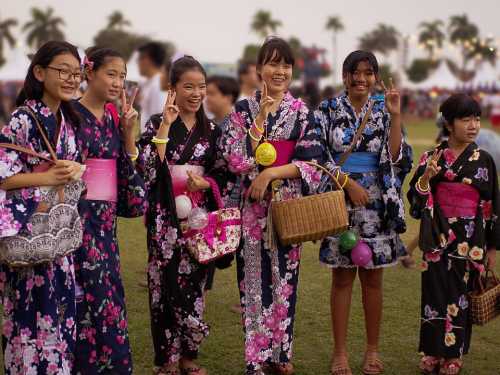
Japan has always attracted attention with its unique culture and traditions, but with curiosity comes numerous stereotypes. On the Internet, you can find many “facts” about Japanese etiquette and behavior, which often turn out to be not entirely true, and sometimes completely fabricated.
While there, I decided to check out the most common myths about the Japanese and share my real-life observations. Are you ready to find out what's actually true and what's just a beautiful fiction?
Myth #1: Japanese people don't eat on subways, buses, or trains at all. According to Japanese etiquette, you can't even eat a chocolate bar. If you eat on Japanese public transport, at the next stop, the local security will ask you to leave the car.
In Japan, there is no law that prohibits eating on public transport. Is it considered indecent? Yes. Especially during rush hour. But if there are few people in the car and you are not bothering anyone, then, for example, you can eat a hamburger, and even more so a chocolate bar. No one will force you to leave the car for this.
To be sure, I asked the Japanese, and they confirmed: “If the smell of food doesn't bother others and the car isn't crowded, you can have a snack. It's not welcome, but you can. But if there's a crowd in the subway car and someone starts eating, risking contaminating others, they'll make a remark.”
On airplanes and long-distance trains, the Japanese eat with pleasure. They love to eat!
Myth #2: In Japan, people don't look into each other's eyes when talking, but rather at their necks. Looking into someone's eyes is considered rude and vulgar by the Japanese.
The Japanese always look into the eyes! No matter who they are talking to, their gaze is directed precisely into the eyes of the interlocutor. Hotel employees, flight attendants, salespeople, my acquaintances – all look into the eyes when addressing and during a conversation, and not at the neck, as they like to write on the Internet. My Japanese acquaintances all unanimously refuted this statement, and even laughed, jokingly directing their gaze at the neck during a conversation. And indeed, it looks funny!
The Japanese believe that if a person looks away or looks away when communicating, they are insincere or indifferent (or are already very shy).
I recently read a funny saying from a blogger that when talking to a Japanese city police officer, he supposedly turns sideways and stares into space because he doesn't want you to lose your dignity.) That's right!)
The Japanese were very amused by this statement, laughing to tears: “How can you turn sideways to a person who is asking a question? What dignity are we talking about? This is disrespect!”
I had to communicate with police officers, and they never turned to me sideways or stared into space while talking, so that I wouldn't lose my dignity.)
The Japanese are taught to look into their eyes from early childhood, teachers and parents get angry if a little Japanese child looks away – it means he wants to deceive or is guilty of something.
When I first came to Japan, I was surprised by the way Japanese children look at foreigners. They look straight into the face, into the eyes, without looking away, and with such surprise and interest!
Myth #3: All Japanese women are very small and thin, have gorgeous hair, and never age.
Japanese people are very different! I have met tall Japanese men and women often. Also, fat people are not uncommon in Japan, and to say that it is practically impossible to find an overweight Japanese woman is ridiculous. You don’t even have to look for them!)
Japanese women also have thinning hair. And of course, unfortunately, women get older…
I've noticed that some older Japanese women like to wear children's clothes and do their hair in “double ponytails,” probably thinking that it will make them look younger.
Myth #4: In Japan, girls have club feet because they sit on their knees (seiza) at low tables.
Recently, Japanese people do not sit in the seiza posture as often as their parents and grandparents used to, who, by the way, are not clubfooted. Men and boys are not clubfooted either.
In Japanese restaurants, along with traditional-style rooms, there are also rooms with regular tables and chairs. Nowadays, Japanese people often sit on chairs.
So the clubfoot of Japanese women is most likely a tribute to a peculiar Japanese fashion. It is considered cute because it is associated with a childish manner of walking. At the same time, I have never met any Japanese children with clubfoot.
Where did this fashion come from, and why did girls become clubfooted? None of the Japanese could answer me — it's cute and that's all! Each country has its own views on female attractiveness and beauty.
Myth 5: If a Japanese person falls asleep in a train, he may snore loudly and fall on you, and according to Japanese etiquette, you should tolerate it.
I asked if this was true. The guys laughed: “If a beautiful girl falls on our shoulder, of course, we will tolerate it, but if it's someone else, we will push her away a little!”
It is considered indecent to lie down on a passenger sitting next to you and snore. It is clear that the person is tired, but if it bothers others, then the snorer is lightly touched on the shoulder and asked to stop snoring and sit up straight.
I would like to add that some Japanese women apply makeup while sitting in the subway car – this is considered bad manners and is often ridiculed in cartoons and posters.





